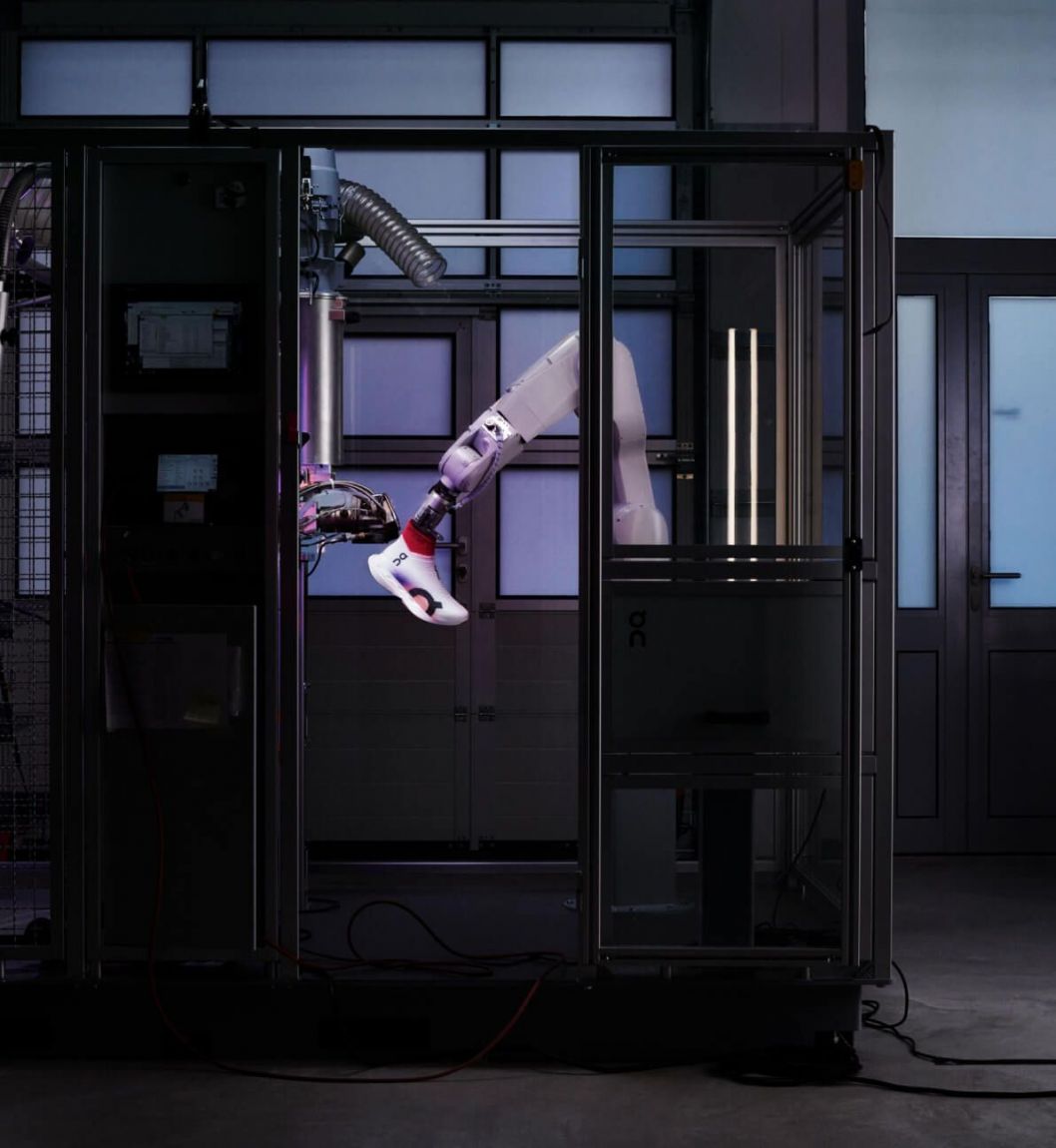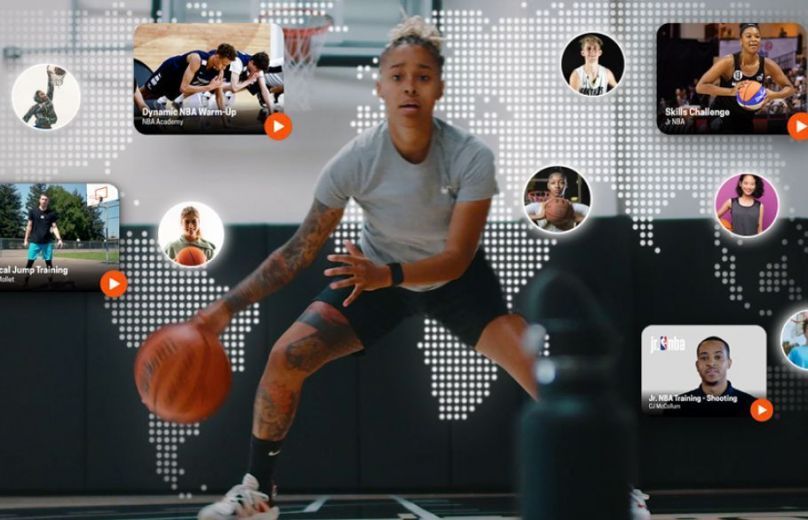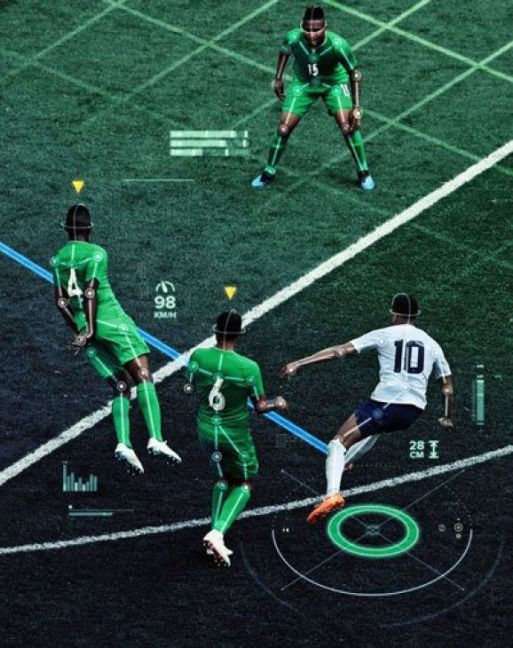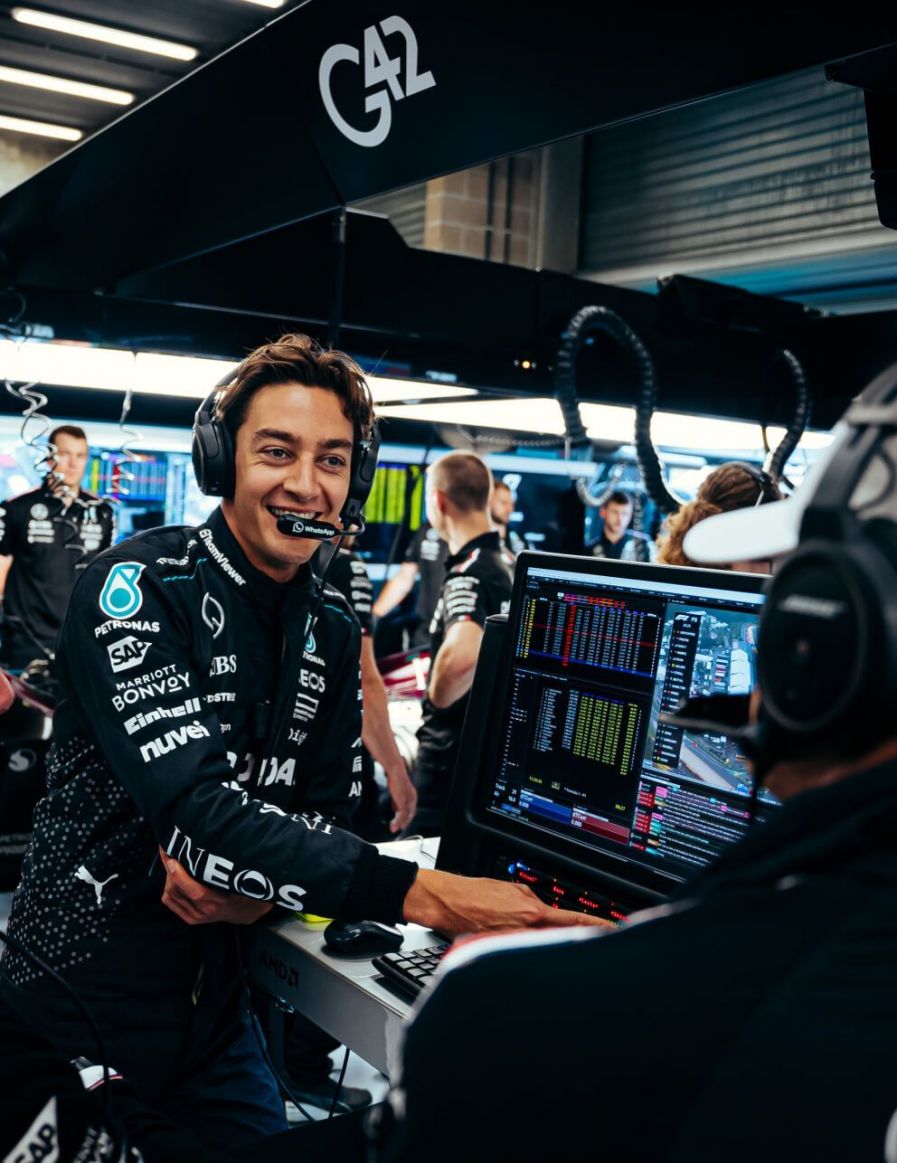The global sports market is expected to reach $680bn by 2028,
growing at just under 10% each year
Source: Statista
Identifying the key sociocultural and technological forces driving the future of AI innovation in sport - from evolving audience expectations to the rise of precision health.

Sport may be a hotbed of AI innovation, but it is also a showcase for what defies the algorithms – the power of the human spirit.
While sports are at the cutting edge of AI research and experimentation, performance in sports remains a sector uniquely resistant to automation. The chaos of the game, the unpredictability of play – these are elements that fans relish.
Demographic and generational shifts are introducing new audience expectations around sports and engagement, giving rise to an expanding fan base with varied interests and preferences.
'The next generation are used to social media and engaging in a two- way interaction, and this needs to be brought into sports broadcast more'
Benn Achilleas, founder, Sport Buff
People are increasingly using sports to define their identity and connect with like-minded individuals. When watching live sporting events from home, 61% of Gen Z fans say they watch with other people - compared to 53% of Generation X and 48% of Boomer fans. Sports fandom is more vibrant than ever, partly as an antidote to years of lockdown, and partly due to the rise of new platforms on which to consume sports.
The increasing availability and affordability of health-monitoring technologies has led to significant advances in precision healthcare, giving athletes broader access to personalized data and insights.
Society is at an inflection point – set to experience step-change advances in what healthcare can achieve. This will have ramifications for the professional sports world.

Each pillar features three trends that highlight the new behaviors, opportunities and tech capabilities set to influence the growth of AI in sport over the next 3–5 years.

The future of strategy and tactics in sport will harness a new form of intelligence, where a competitive edge is achieved only when human and machine capabilities are combined.
Sports serve as a crucible for the broader societal integration of AI. Progress will be achieved by humans and machines using their respective strengths. AI will analyze vast data sets, offering predictions, insights and new possibilities. Humans will then apply critical thinking, balancing these insights with intuition, imagination and creativity to make the best decisions.


We are all working incredibly hard. And the future of AI is fascinating because that could help take huge chunks and make it very thin so that we can keep getting faster and better and better. We'd start with, how do you collaborate with everyone? And then I'll tell you what, AI could make this a different world.
Riccardo Musconi, head of trackside performance at Mercedes-AMG PETRONAS F1 Team, on the role of data in the future of sport
We are all working incredibly hard. And the future of AI is fascinating because that could help take huge chunks and make it very thin so that we can keep getting faster and better and better. We'd start with, how do you collaborate with everyone? And then I'll tell you what, AI could make this a different world.
Formula One is a team sport. We have a lot of experts both at the track and back of the factory looking through a huge amount of data. Everybody tends to be an expert in their own field, so we need to collaborate between a few people to optimise the performance of the car. For example, when you're making a strategy decision, you need to have all the information of how the tyres are behaving and if these things happen separately, your outcome is not going to be favourable. I can see AI helping us in picking up from this huge amount of data, what the important bits are and making them visible to all the people that are involved in making the decision.
It’s always going to be difficult. It's always going to be human error. If there was something in place potentially in the future to help streamline those processes or to help interpret that big data more quickly without any errors, then of course it would make for better results.
Formula One is essentially a team sport, with quite a big team. We have engineers both at the track and at the factory, and they tend to be experts in their own fields. So, it's important to have this collaborative working environment where the information is shared. Now humans can make errors, or they cannot pick up on specific events happening throughout a qualifying or the race. So, I can see AI streamlining a bit these processes and capturing important things that humans might miss and also avoiding errors.
During the qualifying on Saturday and during the race on Sunday, it's important to make fast decisions. The data we are collecting is to come through quickly and interpreted in the fastest way possible. That allows you to make decisions that otherwise, if not made in a timely manner, are going to compromise the result.
When you're boxing someone, normally you're watching the window, and you stretch until it gets right there. Now, it's quite difficult to make the decision, if in the last sector somebody is losing time ahead, all of a sudden you can stop. Do it or don't do it. So those are the times where it's difficult to make a decision and having something that reacts a bit quicker than our models, maybe it could be something that would help us.
During the race, we are monitoring with the GPS, what the pitstop window is. So, for a few laps we look at when we're going to have the gap necessary to stop the car and stop ahead of another car. So, all the eyes are on is this little window, but having a very rapid and fast decision when there's a sudden drop of pace out of the car ahead of our car, is crucial to the outcome.
On Sunday, we are constantly monitoring the gaps for a pit stop. So, when we are approaching the end of our tyre life and we need to make this decision, we constantly look at this gap which is fed by GPS information.
I can see how AI could help us in making the right decision at the right time. Monitoring this gap, but also knowing what the degradation for the two cars is and if there are any yellow flags or any other events happening around the track.
Well, there's a lot more value, that if there is something not right with the car, if you dig into the data, you're going to find the reason, while before it was not a given. You could have spent hours looking at the little amount of data you had, but nothing was coming out of it. Now I can really identify any problem when it happens, that is going to be there somewhere. In my opinion, the area AI could help us with, is looking into the data. So, finding these trends that a human would take a long time to dig out in the data effectively or solving complex problems, multidimensional problems that as a human, it would take you a long time to identify. While artificial intelligence could really make two plus two in a much shorter time or understand something that is not very obvious to the naked eye.
So, the bigger amount of data we are producing these days on the car, it means that we have certainty on the problems affecting any parts of the car. We know that if there is a problem it is going to be there in the data, we are going to find it.
I can see artificial intelligence being quite useful in identifying trends that would be otherwise quite difficult to pick out to the naked eye of the engineer, for example, delving into huge amounts of data and finding trends that it would take us months probably to discover. And AI could really do two plus two, put the things together and offer us the information straight away without wasting our time.



The next generation of AI offers richer insights by considering context, helping coaches and scouts better quantify a player’s contribution to the team and discouraging selfish play.
Data analytics in sports dates back to the 1950s, so players have long been aware that their every move is monitored. Unsurprisingly, players sometimes find ways to game the analytics. Manchester City’s Pablo Zabaleta was known for boosting his statistics by running sprints during injury breaks.




With immersive content, emotionally attuned messaging and hyper-personalized experiences, the future of sports entertainment will deepen engagement and leave fans eager for more.
The advance of technology, especially AI, deep learning algorithms, cloud and edge computing, and natural language processing, will provide fans with a sense of individual attention and intimacy, breaking the fourth wall to make them part of the action.




AI is transforming medicine and the biosciences, offering insights that will enhance our understanding of the human body and its capabilities.
Sport has always represented the best of human capability, advancing in tandem with human progress. Sporting excellence has now reached new heights using insights across nutrition, physiology, psychology and strategy, and an athlete’s training program is managed to the finest detail to gain an advantage.


Cycling generates a vast amount of data captured via power meters, heart rate monitors, GPS devices and other sensors. It’s a perfect match for AI and machine learning capabilities. This allows UAE Team Emirates coaches to observe patterns that were not immediately apparent through traditional analysis. In the future, AI will become an indispensable part of the training by coaching teams, offering new strategies that lead to optimal performance.
UAE Team Emirates coach Kevin Poulton on new strategies to gain an edge
Cycling generates a vast amount of data captured via power meters, heart rate monitors, GPS devices and other sensors. It’s a perfect match for AI and machine learning capabilities. This allows UAE Team Emirates coaches to observe patterns that were not immediately apparent through traditional analysis. In the future, AI will become an indispensable part of the training by coaching teams, offering new strategies that lead to optimal performance.
AI automates data analysis so coaches can focus more on strategic planning, athlete interaction and other critical areas. AI systems can analyze training data overnight and provide the team with practical insights by the morning, saving hours of manual data-crunching.
AI analyses have shown that targeted, high-intensity training sessions can be more beneficial
than prolonged, lower-intensity sessions. AI has identified that certain riders perform optimally with reduced training volume but increased intensity. This has led to better race results and quicker recovery times. It’s an insight that has completely changed our training approach, so we focus more on quality not quantity.
AI enables dynamic and interactive analysis rather than static charts and graphs. Coaches can now ask specific questions and receive tailored insights. If a coach wants to know why a cyclist’s performance dipped during a specific segment of a race, for instance, AI can quickly analyze multiple variables and provide a comprehensive explanation.



The real value that AI brings is how it accelerates innovation in the design phase, speeding up the process that would be heavy going for humans, but takes no time for computers. Some 45% of global organizations agree, and they plan to re-invest the savings from generative AI back into innovation.
The final decisions and expertise will always come from the domain experts working with this new technology. AI will not only advance design innovation in unimaginable ways, but it will also improve the job of design teams, giving them more time to focus on creativity.
‘We can design it at super-speed,’ says Chris Brady. ‘What we are doing now is supercharging analytics, taking it out of human hands because the machine can do it a lot quicker, so the human talent can focus more on the design. Using data points to create the best tennis racket is something the computer can do in seconds, then the designers and engineers can get on with testing it.’





For better web experience, please use the website in portrait mode